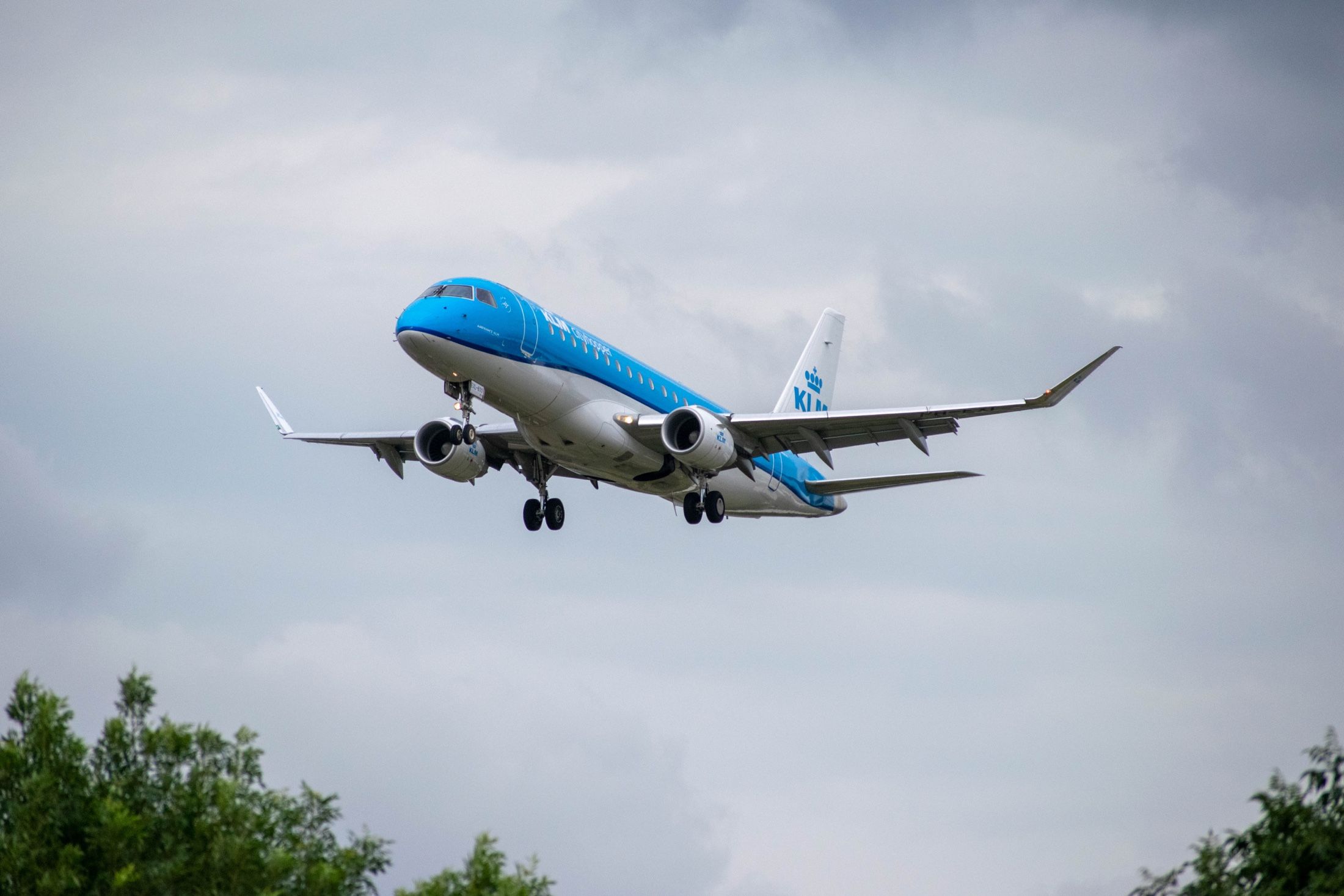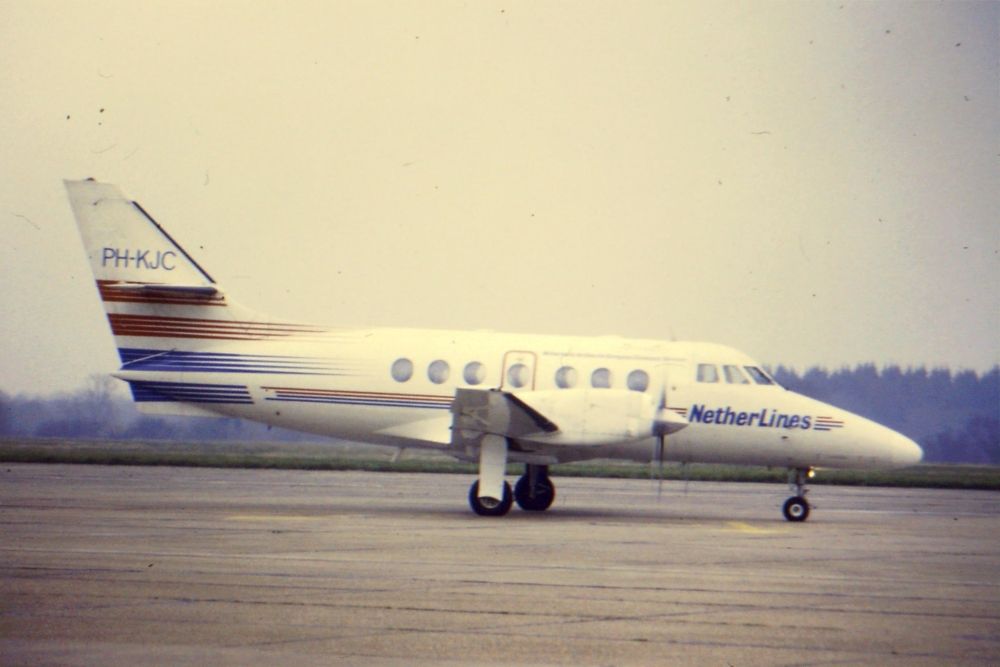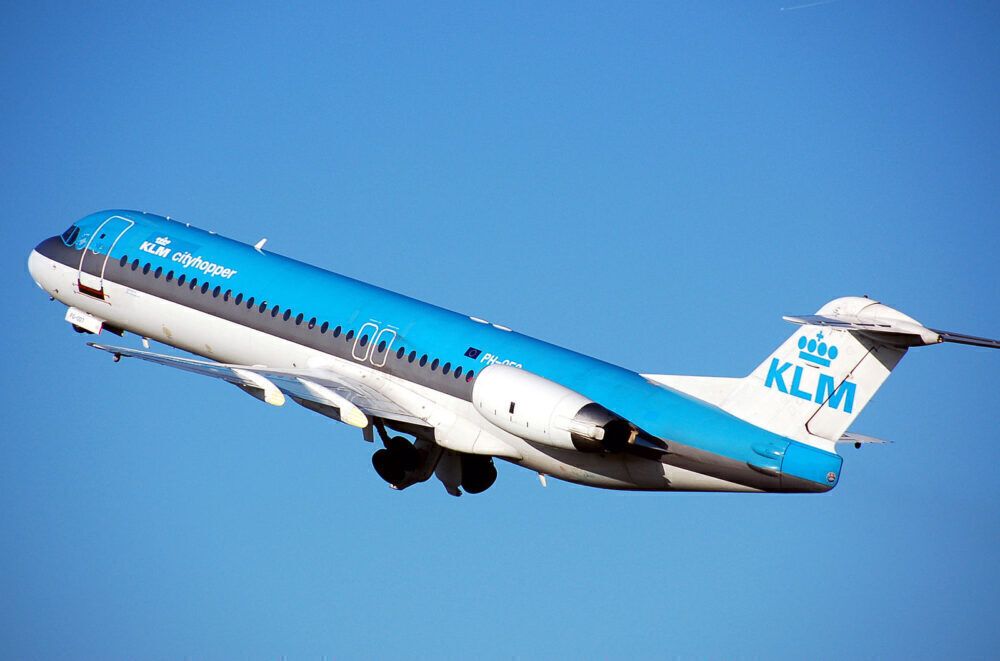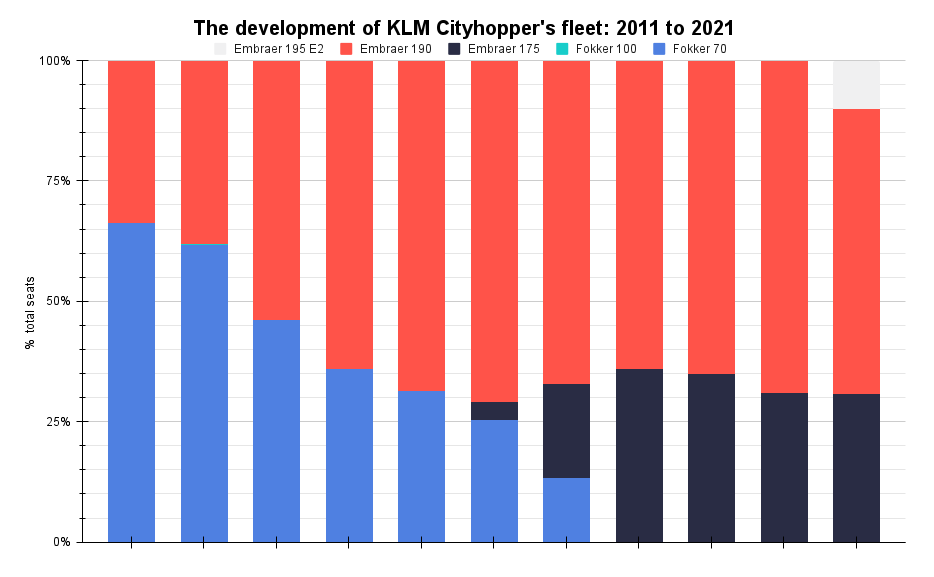KLM Cityhopper has celebrated its 55th anniversary – or 30th, depending on how you wish to look at it. With NLH and NetherLines merging in 1991, the brand of KLM CityHopper was born. Fokker 50s and 100s from KLM UK were added to the fleet 12 years later, and played a vital role. Now, the Fokkers have gone, leaving an all-Embraer operation.
First came NLH
The history of KLM Cityhopper, the fully owned regional arm of KLM that provides feeder and off-peak regional jet service, dates back to 1966. Then, NLH, a subsidiary of KLM, was one of its predecessors. Launched on August 29th, it initially focused on domestic routes within the Netherlands, motivated by industrialization and economic development.
At first NLH used Fokker 27s and deployed them from Amsterdam to Groningen via Enschede together with Amsterdam to Maastrict via Rotterdam and Eindhoven. It connected areas of the country that took a relatively long time to reach overland. International routes followed in the 1970s and 1980s along with the 'Cityhopper' appendage and Fokker 28 jets (remember them?). It slowly became a feeder operator for KLM, a role that remains vital today.
Stay aware: Sign up for my weekly new routes newsletter.
And then NetherLines
KLM acquired Dutch carrier NetherLines in 1988, four years after the regional operator was launched and 22 years after NLH materialized. NetherLines was another of KLM Cityhopper's predecessors.
With KLM's acquisition came NetherLines' Jetstream 31s, with a reasonably decent international network. Its Jetstreams had "Netherlands Airlines for European Commuter Service" titles. Later, Saab 340s, which would later also be used by KLM Cityhopper, were added.
In 1991, NLH Cityhopper and NetherLines merged, and the name changed to KLM Cityhopper, the airline we know today. You could, therefore, fairly say that the anniversary of KLM Cityhopper is either 1966 or 1991; the choice is yours depending on how literal you wish to be.
The story isn't complete
After a few years of gradually building its stake in regional operator Air UK, KLM became the carrier's sole owner in 1997 with the name KLM UK adopted. (The author flew the carrier a few times, including from Stansted to Frankfurt and Paris CDG.)
However, for various reasons we'll look at another time, KLM UK didn't last long, with the remnants – including Fokker 50s and Fokker 100s – integrated into KLM Cityhopper in 2003. This development boosted the Dutch carrier significantly.
KLM Cityhopper since 2011
Between 2011 and 2019, the regional carrier, whose network includes many thinner routes that KLM itself wouldn't or couldn't operate, grew available seat capacity by 50%, analyzing data from OAG shows. It ended 2019 with 10.8 million seats, a significant volume.
KLM Cityhopper's fleet now consists solely of Embraers, of which it has 54: 17 88-seat Embraer 175s, 32 100-seat Embraer 190s, and four 132-seat Embraer 195 E2s. These more fuel-efficient aircraft replaced its aging but characterful and different Fokker jets.
The Fokkers disappeared in 2012 and 2017
KLM Cityhopper's Fokker 100s, previously used by Air UK and then KLM UK, were withdrawn in 2012. OAG schedules show that 13 destinations saw the aircraft in that final year, with the type remaining an important niche aircraft.
Five years later in 2017, it was the turn of the smaller Fokker 70 to go, the last service of which was due to land from Heathrow at 20:30 on October 28th. The type played a crucial role to regional UK airports. The author flew the 80-seater multiple times, including from Kent's Manston – no longer an airport – to Amsterdam.
What are your experiences or memories with KLM Cityhopper? Let us know in the comments.





